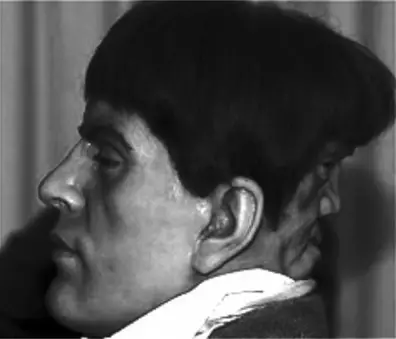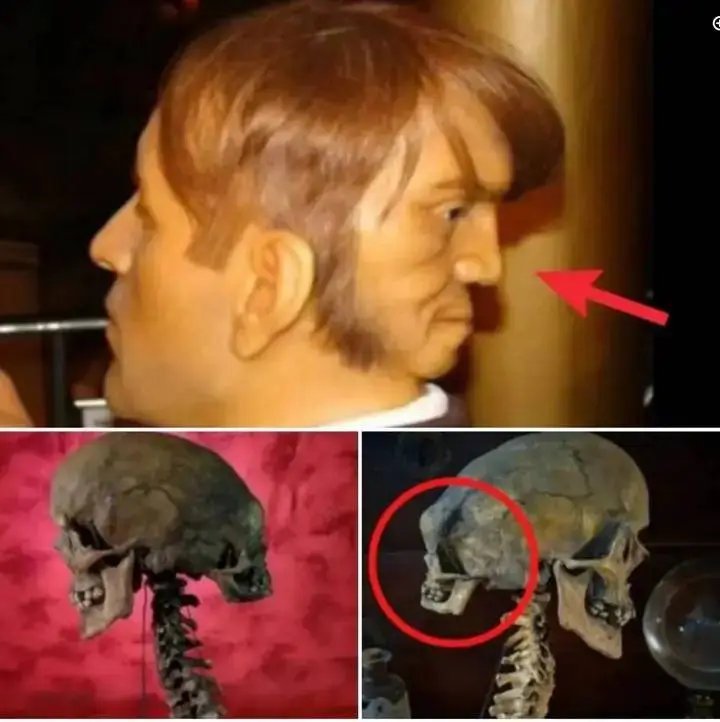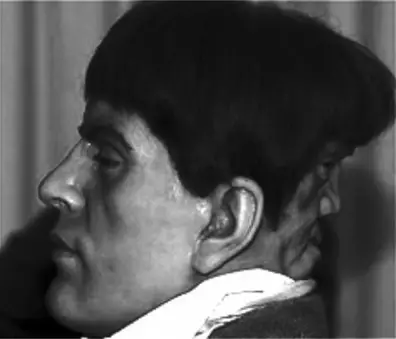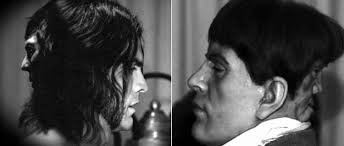In the realm of strange medical history and eerie folklore, few figures are as haunting as Edward Mordake. Dubbed “The Man with Two Faces,” his story has fascinated and unsettled people for centuries. The legend speaks of a man born in the 19th century with a rare condition—a second face on the back of his head. This enigmatic tale blurs the line between medical reality and supernatural lore, leaving us with a narrative both tragic and mysterious.

Who Was Edward Mordake?
Edward Mordake’s story reportedly originates from 19th-century England. While many details about his life remain uncertain, the central claim is his unique physical anomaly: a fully formed second face on the back of his head. This condition, rooted in medical science, is associated with craniopagus parasiticus, a rare congenital disorder where a parasitic twin is incompletely formed.
According to accounts, Mordake’s second face was non-functional, unable to eat, speak, or see. However, legends suggest it was far more sinister. This face, it was said, could whisper, laugh, and cry independently of Mordake, tormenting him with malicious intent. Whether real or a product of embellished storytelling, this facet of his tale contributes to the chilling legacy of Edward Mordake.
The Legend of the Whispering Face
The most unsettling aspect of Mordake’s story lies in the alleged behavior of the second face. According to lore, this face would mutter dark, menacing words, often mocking or taunting Edward. It was said to cry when he was happy and laugh when he was in pain. Mordake reportedly described the face as “a demon,” whispering nightmarish thoughts into his ears and depriving him of peace.
Imagine living with such a constant presence—an unrelenting voice at the back of your mind, literally. This torment, as the story goes, drove Mordake to isolate himself, avoiding human contact and descending into despair.

The Tragic Downfall of Edward Mordake
Edward’s life was one of profound suffering, both physical and emotional. The presence of the second face subjected him to ridicule and rejection from society. His desperate attempts to find relief reportedly led him to seek the help of numerous doctors. Yet, no medical procedure at the time could remove the face or alleviate his anguish.
Unable to endure the torment, the legend concludes with Mordake taking his own life at a young age. Before his death, he is said to have pleaded with his doctors to destroy the second face upon his burial, fearing its continued existence. His tragic end symbolizes the emotional toll of living as a misunderstood anomaly, cast out by a society that could not comprehend his condition.

The Medical Perspective: Was Mordake Real?
While Edward Mordake’s story has captivated audiences for generations, the question of its authenticity remains unresolved. The medical condition associated with his tale, craniopagus parasiticus, is indeed real. Cases of parasitic twins—where one twin does not fully develop and remains attached to the other—have been documented. In some instances, this results in partially formed limbs or facial structures.
However, no historical evidence definitively confirms Mordake’s existence or the supernatural qualities attributed to his second face. The earliest written accounts of his story appeared in 19th-century medical texts, which often blended scientific fact with sensationalized storytelling. The fantastical elements—such as the whispering face—are likely exaggerations added over time to enhance the tale’s intrigue.
The Role of Folklore in Edward Mordake’s Legacy
Mordake’s story has transcended its medical origins, becoming a staple of folklore and popular culture. Its eerie nature has inspired countless retellings, from horror films to books and documentaries. His tale reflects humanity’s fascination with the macabre, as well as our fear of deformity and otherness.
At its core, Mordake’s story highlights a profound truth about societal attitudes toward physical anomalies. Those who deviate from the norm are often met with fear, ridicule, and isolation. For Mordake, whether real or imagined, this alienation would have compounded the psychological toll of his condition, leaving him trapped in a life of perpetual torment.

Why Mordake’s Story Still Resonates
So why does Edward Mordake’s tale continue to captivate us? It’s not just the bizarre medical details or the haunting legend of a whispering face. His story touches on universal themes: the pain of being different, the longing for acceptance, and the psychological toll of isolation.
Mordake’s plight also serves as a reminder of how little was understood about rare medical conditions in the 19th century. Today, with advancements in medicine and psychology, conditions like craniopagus parasiticus can be studied and treated with greater care and empathy. Yet, the stigma surrounding physical anomalies persists, making Mordake’s story as relevant as ever.
A Legacy of Mystery and Compassion
Edward Mordake’s tale is a chilling blend of fact and fiction, science and superstition. Whether or not his second face whispered sinister words, his story offers a powerful commentary on the human condition. It reminds us of the importance of compassion, understanding, and acceptance in a world that often shuns those who are different.
In the end, Mordake’s life—real or legendary—continues to evoke a mix of awe, pity, and curiosity. His story has cemented his place as a figure of macabre fascination, a symbol of both the fragility and resilience of the human spirit. While the truth of his existence may remain shrouded in mystery, Edward Mordake’s legacy endures as a haunting reminder of the thin line between reality and legend.